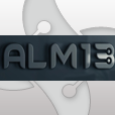Remove previous version
Basically my problem is this:
I am working on an installer, and I want to remove the previous version. I have all the package codes, and upgrade codes of all previous versions. How do I go about checking if there is a previous installation on the system, and then removing it before installing the latest version. What tables do I need to adjust?
I am working on an installer, and I want to remove the previous version. I have all the package codes, and upgrade codes of all previous versions. How do I go about checking if there is a previous installation on the system, and then removing it before installing the latest version. What tables do I need to adjust?
0 Comments
[ + ] Show comments
Answers (8)
Please log in to answer
Posted by:
kristjan84
15 years ago
Posted by:
dpu_bansal83
15 years ago
Posted by:
michaelnowell
15 years ago
Once you have populated the upgrade table correctly and added the name of the upgrade to the SecureCustomProperties property, then the previous versions should be removed when the new app is installed.
If you're expecting the newer version to appear with the maintenance dialog to appear when you first run the newer versions installation, that will not happen. The maintenance window will only appear an application is installed (which in your case, it isn't), e.g. when you launch the installation a second time or from Add/Remove Programs. So you're new version is doing what it should do.
When you're installing your new version, it should detect that a previous version (specified in the upgrade table) is installed and it will remove it whenever the Action 'RemoveExistingProducts' is launched. RemoveExistingProducts is normally found either near the end or the start of the 'Execute Immediate' sequence.
You're best bet is to use Windows Installer Logging when you install your newer version to see if is detecting that previous versions are installed. If not, then you can start you're troubleshooting from there.
Cood luck.
If you're expecting the newer version to appear with the maintenance dialog to appear when you first run the newer versions installation, that will not happen. The maintenance window will only appear an application is installed (which in your case, it isn't), e.g. when you launch the installation a second time or from Add/Remove Programs. So you're new version is doing what it should do.
When you're installing your new version, it should detect that a previous version (specified in the upgrade table) is installed and it will remove it whenever the Action 'RemoveExistingProducts' is launched. RemoveExistingProducts is normally found either near the end or the start of the 'Execute Immediate' sequence.
You're best bet is to use Windows Installer Logging when you install your newer version to see if is detecting that previous versions are installed. If not, then you can start you're troubleshooting from there.
Cood luck.
Posted by:
kristjan84
15 years ago
Posted by:
India_Repackaging
15 years ago
Hi,
The RemoveExistingProducts action to be run be scheduled to run in three ways
I think you can use any of the above three methods to do your upgrade along with populating the Upgrade table correctly just as Mike suggested. And as usual the analyzing the verbose logs will help a lot as well.
The RemoveExistingProducts action to be run be scheduled to run in three ways
- InstallValidate action and the InstallInitialize action where the installer would remove the previous application before installing the new one.
- After InstallInitialse.
- After InstallFinalise action. Microsoft recommends this method as the most effeicient method while working with upgrades.
I think you can use any of the above three methods to do your upgrade along with populating the Upgrade table correctly just as Mike suggested. And as usual the analyzing the verbose logs will help a lot as well.
Posted by:
anonymous_9363
15 years ago
I want the maintenance dialog to be displayed, so the user can first remove the old version.The different responses here will get you the result you want. An important lesson to learn is that absolutely the LAST thing you do is allow users the opportunity to mess with the install process. They will, almost without exception, choose the WRONG option and at whose door do you think the blame will be laid?
Posted by:
jmcfadyen
15 years ago
 Rating comments in this legacy AppDeploy message board thread won't reorder them,
Rating comments in this legacy AppDeploy message board thread won't reorder them,so that the conversation will remain readable.





